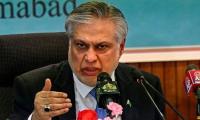The People’s Liberation Army (PLA) is celebrating 96 years of its establishment. It is a sign of hope and pride for China. Since the inception of PLA, Communist Party of China (CPC) has guided it according to the thoughts and tactics of Sun Zu and the wisdom of Confucius, which turned it into a well-disciplined and trustworthy force. It started its journey as a protector of people’s interests. It shielded the people against the oppressors and protected country sovereignty against the Japanese and other enemies during World War II.
During the course of time, PLA decorated its chess with numerous success stories. In 1962, the force inflicted heavy losses on India and forced them to look for peaceful solutions to border disputes. It also fiercely fought against Vietnam and USSR to safeguard national sovereignty. PLA is carrying on the tradition of safeguarding the national interest at Galwan Valley, in the South China Sea and others.
The major reasons for the success of PLA are its continuous belief in serving the people, country and “reforms” according to changing dynamics. The first reform period started in the 1950s with the cooperation of the USSR. It helped China turn PLA into a military force from a loose organisation, mostly consisting of peasants and revolutionaries.
In the 1980s, PLA went through another major reform. The party decided to reduce the number of soldiers and make it a more efficient organisation. The other purpose was to release the human resource for active participation in economic activities.
Now, under the leadership of President Xi Jinping, PLA is going through another reform period. President Xi has declared PLA would be a world-class force, equipped with all instruments of defence, combat and attack. He reformed the basic structure of the force, rearranged the existing departments and created new ones to smoothen the chain of command.
The old departments of PLA General Staff Headquarters, General Political Department, General Logistics Department and General Armaments Department have been reorganised. Now, it has 15 departments which ensure a linear and efficient chain of command. The military command areas also went through reshuffling and old Shenyang, Beijing, Lanzhou, Jinan, Nanjing, Guangzhou and Chengdu MACs have been replaced by new theatre commands.
Though, the most important interventions are to implement strict accountability and professional development of soldiers, President Xi deems it necessary to ensure integrity and capability of soldiers and PLA as an institution.
He also ordered to modernise weapons and equipments and ventured into new technologies like cyber warfare. Building on the direction given by President Xi, PLA has diverted substantial resources for R&D. Innovation is leading the implementation of the vision. Now, PLA is showing leadership in some cutting-edge technologies.
The vision of PLA has also been revised according to changing global dynamics and the role of China. The new vision has three basic responsibilities for PLA: Safeguarding China’s Sovereignty, Security and Development Interests”. The preservation of development interests at the international level is a new dimension which has enhanced the sphere of work.
For international engagements in New Era, PLA is adhering to the Global Security Initiative (GSI) philosophy and contributing to implementing the four pillars of GSI. The contribution to UN peacekeeping forces is another feather in the cap of PLA. Now, PLA is contributing highest number of soldiers to UN peacekeeping missions.
Despite continuous reforms, one aspect always remains constant in PLA’s vision and decision-making – cooperation with Pakistan. For decades, they are assisting each other in developing their strengths and safeguarding national interests. The cooperation between two armies is multi-dimensional and multifaceted. CPC always advised PLA to assist Pakistan in modernising its defence capabilities by adhering to the principle of self-sufficiency.
Thus, spirit of self-sufficiency is guiding the collaboration between PLA and Pakistan Armed Forces. There are many examples of such cooperation, but Heavy Mechanical Complex Taxila (HMCT), Al-Khalid Tank and JF-17 Thunder are the most prominent ones. HMCT had helped Pakistan achieve the goal being self-sufficient in weapon production to a greater extent. Both militaries also joined hands to erect the miracle of Karakoram Highway.
PLA was also at the forefront to assist Pakistan in the fight against COVID-19. The first supply of equipment to fight COVID-19 was delivered by a Major General of the PLA. It was followed by the arrival of a team of doctors from PLA.
Further, it is heartening to note both militaries are cognizant of the region's changing dynamics and the world. They are also well aware of the realignment of different countries to harm the core interests of both countries. The argument can be qualified by the ongoing campaign against China-Pakistan Economic Corridor and BRI. The two countries are trying to strengthen their cooperation to counter and combat emerging problems. Cooperation is getting stronger day by day, especially in the fields of modern technologies and non-traditional warfare. Army Chief Gen Asim Munir's visit to China has further strengthened this relationship.
Thus, it can be inferred Pakistan Armed Forces and PLA relationship is multi-dimensional, time-tested and built on the spirit of the iron brotherhood, rather a practical example of slogan of “iron brotherhood”.
Parents informed the police about the kidnapping of their son and subsequent demands of ransom money by the kidnappers
Rains, which started in plain areas late Saturday night, continued throughout the day
Police claimed to have arrested four accused, including Akram, Zaka Abid, Khalid and Amjad
Diplomatic sources say that the two countries have appointed liaison officers for counter-terrorism on the...
World Bank reports that the government of Pakistan is no longer able to undertake social welfare projects







